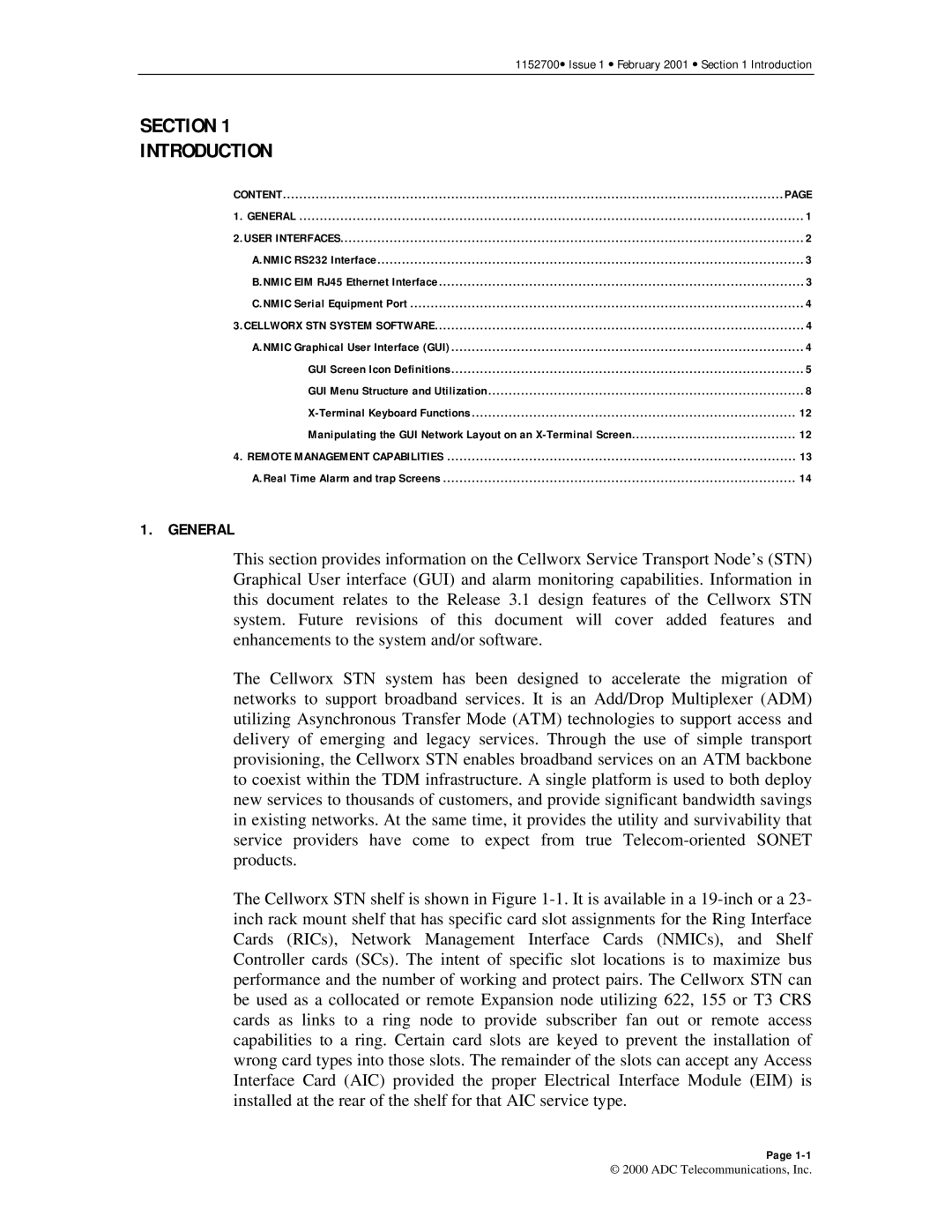1152700• Issue 1 • February 2001 • Section 1 Introduction
SECTION 1 |
|
INTRODUCTION |
|
CONTENT | PAGE |
1. GENERAL | 1 |
2.USER INTERFACES | 2 |
A.NMIC RS232 Interface | 3 |
B.NMIC EIM RJ45 Ethernet Interface | 3 |
C.NMIC Serial Equipment Port | 4 |
3.CELLWORX STN SYSTEM SOFTWARE | 4 |
A.NMIC Graphical User Interface (GUI) | 4 |
GUI Screen Icon Definitions | 5 |
GUI Menu Structure and Utilization | 8 |
12 | |
Manipulating the GUI Network Layout on an | 12 |
4. REMOTE MANAGEMENT CAPABILITIES | 13 |
A.Real Time Alarm and trap Screens | 14 |
1. GENERAL
This section provides information on the Cellworx Service Transport Node’s (STN) Graphical User interface (GUI) and alarm monitoring capabilities. Information in this document relates to the Release 3.1 design features of the Cellworx STN system. Future revisions of this document will cover added features and enhancements to the system and/or software.
The Cellworx STN system has been designed to accelerate the migration of networks to support broadband services. It is an Add/Drop Multiplexer (ADM) utilizing Asynchronous Transfer Mode (ATM) technologies to support access and delivery of emerging and legacy services. Through the use of simple transport provisioning, the Cellworx STN enables broadband services on an ATM backbone to coexist within the TDM infrastructure. A single platform is used to both deploy new services to thousands of customers, and provide significant bandwidth savings in existing networks. At the same time, it provides the utility and survivability that service providers have come to expect from true
The Cellworx STN shelf is shown in Figure
Page
© 2000 ADC Telecommunications, Inc.
